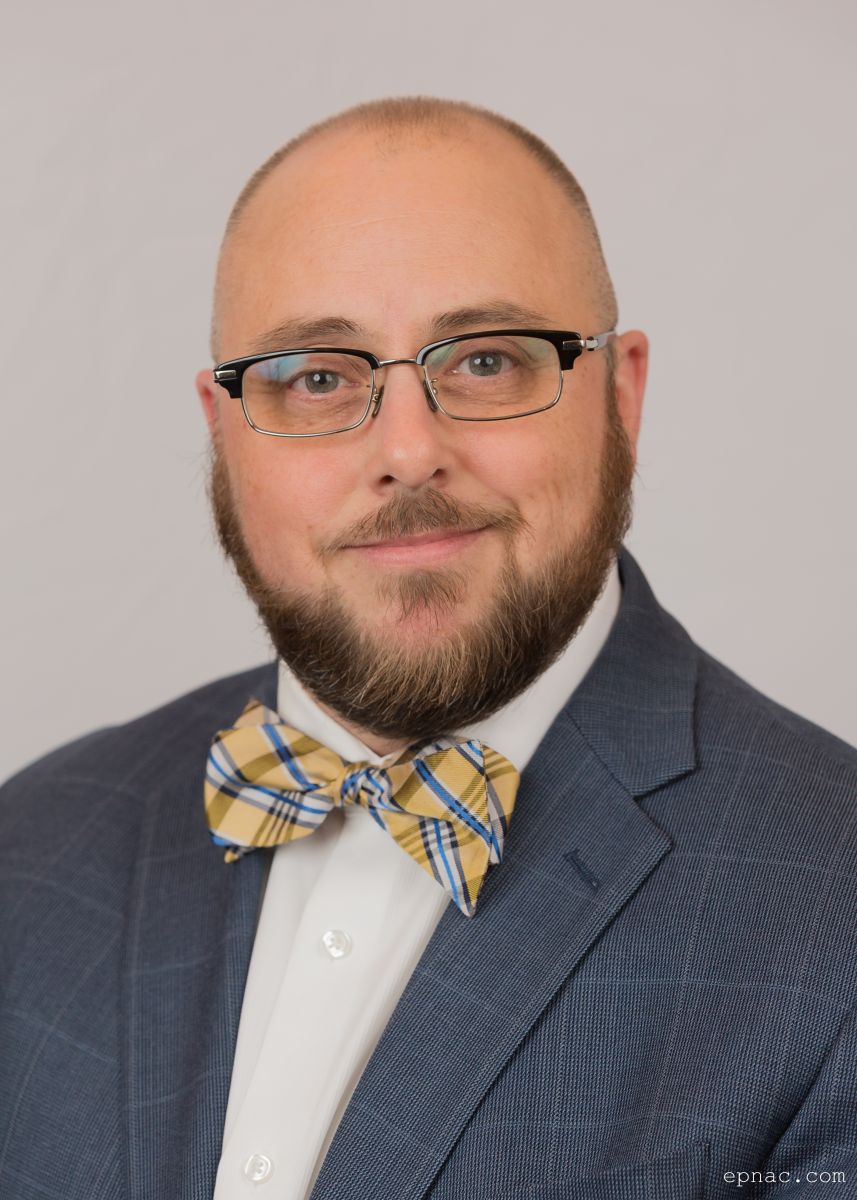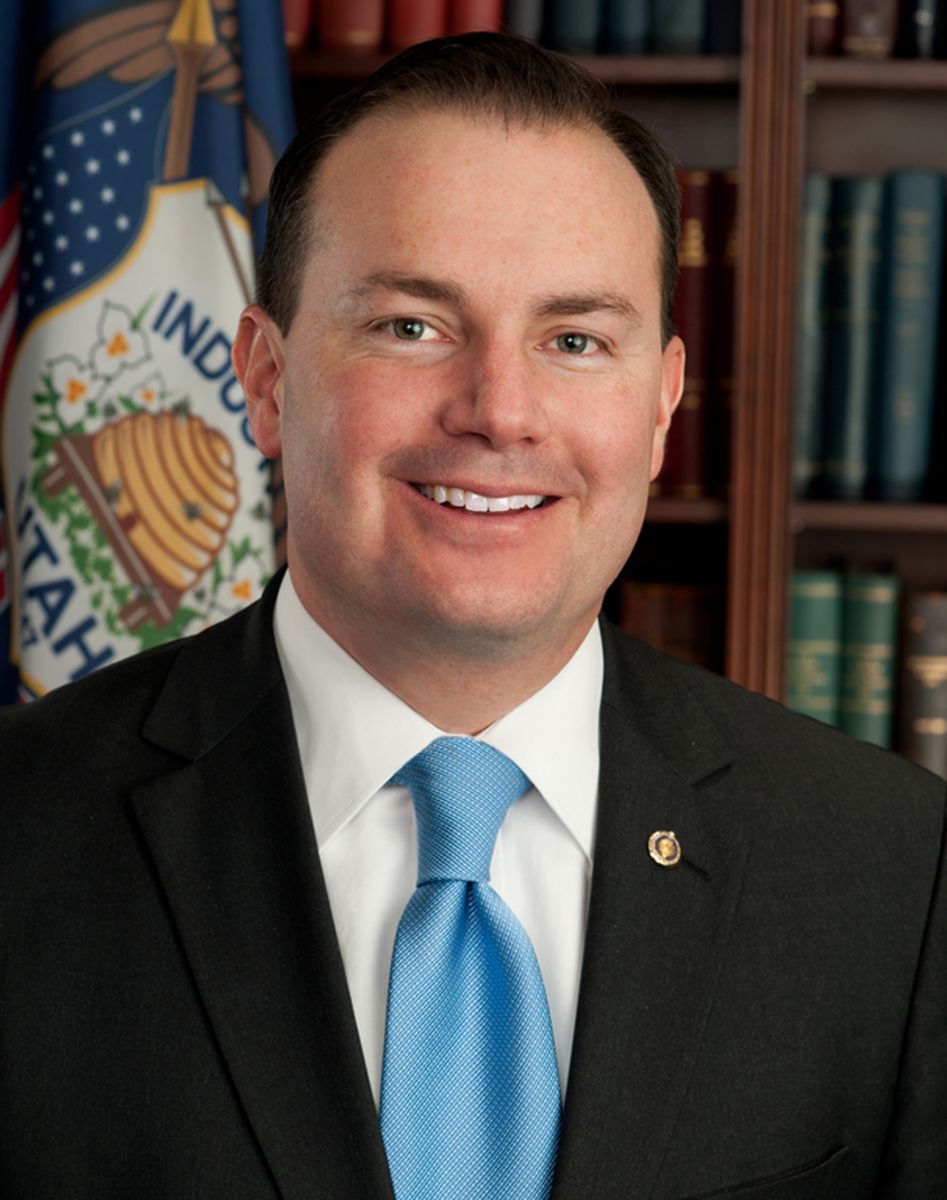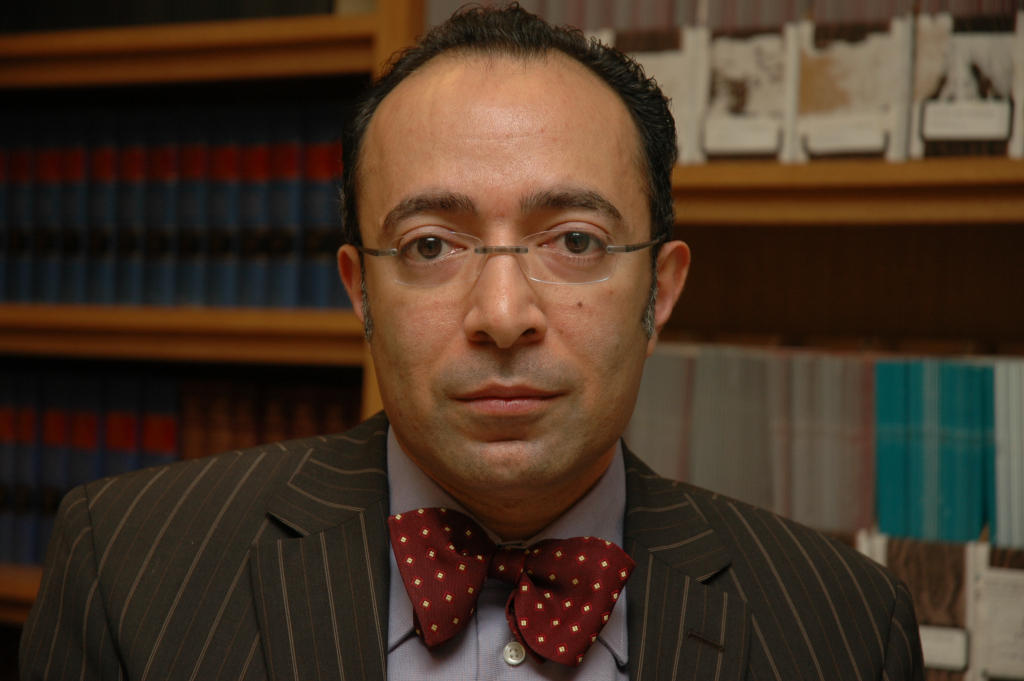You have /5 articles left.
Sign up for a free account or log in.

Western Governors University
The inspector general at the Department of Education has recommended that the department require Western Governors University to return more than $700 million in federal funding. The IG argues that most of the courses offered by the online-only nonprofit university do not meet federal requirements for distance education, citing specifically the “inadequate” faculty role in its competency-based programs.
The department is unlikely to follow through on the inspector general’s request, and WGU has support from most accreditors and bipartisan observers. Still, many observers have already registered concerns, both on the legislative side and more broadly about the conversation about online education.
“Inside Digital Learning” reached out to digital learning experts for thoughts on these questions: How might the inspector general's recommendation impact institutions’ approaches to competency-based learning, whether they already have such programs or are thinking about implementing them? What is the proper role of the faculty member in online education more broadly? What are the most effective methods for establishing standards for faculty involvement and qualifications? Are there any specific legislative and/or regulatory changes that could help clarify requirements for the faculty role online?
 Deb Bushway, competency-based education consultant
Deb Bushway, competency-based education consultant
The [Office of Inspector General] report has reignited conversations about the need for balance between innovation and protections for federal financial aid. This audit focused on a distinction between “correspondence courses” and distance education. Importantly, competency-based education (CBE) has no real status in the Higher Education Act (HEA). Both distance education and correspondence courses are defined in Title I, section 103, of the HEA. One of the critical distinctions articulated in these definitions is the requirement that distance education uses technology to support “support regular and substantive interaction between the students and the instructor, either synchronously or asynchronously.”
This important distinction served to provide guardrails for the development of distance education. It was meant to ensure that, in distance education, 1) students were not “left to learn on their own” and 2) a meaningful credential was earned by the student, since many correspondence courses offered fragmented materials, resulting in credentials lacking in educational integrity.
At last week’s meeting of the Competency-Based Education Network (C-BEN) -- a diverse group of public and private organizations such as colleges, universities, state systems and service providers collaborating to address the shared challenges of designing, developing and scaling high-quality competency-based education programs -- some CBE program leaders worried about the impact of the OIG’s audit on their institution’s commitment to CBE. Once again, the lack of a definition for CBE in the HEA causes institutions and others to conflate CBE and distance education. While CBE programs are sometimes offered via distance education, other delivery modalities are also used.
When the HEA was last revised, describing something as a “self-paced course” was a proxy for the student being “left to learn on his/her own.” In the intervening years, advances in technology, predictive analytics, cognitive science and instructional design have spurred the creation of the new generation of tools for faculty. In short, a self-paced course in 2017 does not necessarily leave a student to learn on his/her own.
In a well-designed CBE program, support for student learning is integrated across the program, delivered by faculty in a meaningful way. High-quality CBE programs are designed with the end competencies in mind, scaffolding learning intentionally as the student progresses to the credential.
If the actual potential for CBE programs is to be achieved, new statutory and regulatory solutions will be required. These solutions need to be positioned for the future of higher education rather than rooted in the past. One possibility would be to establish a definition of CBE within the HEA, with new expectations established to distinguish CBE from both distance education and correspondence courses. An important resource for this work would be the newly released Quality Framework for Competency-Based Education Programs (from C-BEN). This framework is intended to provide guardrails and assurances to policy makers and accreditors tasked with regulating this rapidly developing field of practice, while also ensuring that learners understand what they should expect from a CBE program.
Leveraging tools such as this, the Department of Education and Congress can work together to create a pathway for responsible innovation, offering solutions to our educational challenges while protecting students and taxpayers.
 Van Davis, associate vice president of higher education policy and research, Blackboard
Van Davis, associate vice president of higher education policy and research, Blackboard
Ensuring that students receive a high-quality education should be at the heart of these -- and every other set of -- higher education conversations. Sadly, the Office of the Inspector General began this latest report by abdicating any consideration of quality when it stated, “We did not assess whether the [WGU] model was improving educational quality or expanding access to higher education.”
Like many others, I worry that the scope of the OIG report will have a chilling impact on institutions that are interested in competency-based education as well as other innovations, whether they be offered via a competency model, online, hybrid or face-to-face.
Unfortunately, there is still a perception in some corners of higher education that the traditional faculty model, where faculty and students are in the same physical space, automatically equates to quality education. But we know that isn’t the case; all of us have suffered through classes where the size made any sort of “regular and substantive” interaction impossible. As long as the OIG defines “regular and substantive” in terms that mirror the traditional classroom model, there is little hope of having a serious conversation about defining quality in such a way to allow for new, innovative models of teaching, especially those that disaggregate faculty roles.
Advocates of CBE are not suggesting that faculty be replaced by technology or coaches. Faculty have historically been the protectors of quality and should continue in that role. But there is a myth that a faculty member magically comes out of graduate school as a content expert as well as a teaching and assessment expert. However, outside of perhaps colleges of education, that is seldom the case.
The vast majority of faculty are subject-matter experts first with everything else functioning as an afterthought; the typical professor is routinely expected to function as a content expert as well as demonstrate expertise in pedagogy and assessment. Yet this aggregated faculty role and the quality of the corresponding instruction in a more traditional education experience is seldom interrogated by anyone, let alone the Education Department’s Office of Inspector General.
What should be done to solve this increasingly complex and urgent problem? The department must stop this implied equating of traditional models with quality and shift its focus from counting hours to ensuring quality. This will mean working with those in the field to define what quality looks like and the metrics that can be used to assess it across all modalities and not just CBE or online education. It is also clear that legislative action is necessary to address the current ambiguity around “regular and substantive” that the department and OIG have bred.
Finally, dialogue and a reframing of the conversation is necessary. As educational practitioners, we must reach a definition of quality that protects students from fraud while still allowing innovation that can improve student access and success. A first step in doing this is to end the false dichotomy between consumer protection and innovation that seems to be driving much of the current conversation.
 Amy Laitinen, director for higher education in the education policy program, New America
Amy Laitinen, director for higher education in the education policy program, New America
The response to last week's OIG report on WGU was not surprising: incredulity, bafflement, outrage. How could the OIG recommend that a bipartisan poster child for innovation and competency-based education be ineligible for federal financial aid! The Twitterverse was quick to point out that in face-to-face education, faculty-student interaction is assumed but not at all guaranteed, and quality interaction even less so.
I agree with many of the sentiments expressed, and even though there is a zero percent chance that the Department of Education will accept the OIG’s recommendation around aid eligibility, I continue to advocate for careful and thoughtful changes to the law for high-quality competency-based education programs.
But as tempting as it may be to just throw out the regular-and-substantive requirement, we must remember what led to the law in the first place. It was a response to rampant fraud and abuse stemming from the increase in correspondence programs in the 1980s and 1990s, which came just a decade after rampant abuse in correspondence or “home study” programs aimed at veterans fresh from the Vietnam War and flush with GI Bill dollars. These programs promised flexible options for working adults, but the availability of federal dollars -- with no strings attached to student outcomes -- proved too tempting for unscrupulous providers to resist. Students were sold a bill of goods that left them with debt and little else.
To reduce the risk of abuse, Congress decided to limit the amount of aid available to correspondence programs. To do that, they needed to create a definition of correspondence education. This 1992 definition has a number of parts, the most critical being that students are “separated from the instructor. Interaction between the instructor and student is limited, is not regular and substantive, and is primarily initiated by the student. Correspondence courses are typically self-paced.”
In 1992, this made sense as a baseline level of protection for students. However, the rise of CBE programs that use different faculty models to support self-paced student learning have highlighted the need to update this law. The CBE community has been grappling with how to keep the intent of the law to enable high-quality, outcomes-driven programs that serve students well to thrive. Gutting the requirement could open the floodgates to unscrupulous actors that call themselves CBE, take students’ money and provide a shoddy education, and ruin the reputation of the good actors in the field -- ultimately destroying the credibility of CBE itself.
Too often, we see policy as either designed to provide consumer protection or promote innovation. We’ve seen time and time again that innovations meant to help underrepresented groups often wind up harming those very populations, particularly if federal money is up for grabs with no connection to outcomes. But I think we can -- and should -- have both. Congress has the perfect opportunity to show that innovation does not have to be at odds with protecting students, making sure that students are getting the academic and other supports that they need by carefully updating -- but not gutting -- the regular and substantive interaction requirement for high-quality CBE programs.
.JPG)
The OIG report should not deter institutions from innovating around teaching and learning models, including the traditional role of the faculty when appropriate. However, when they do so, the question should not be “do I need to include in this model a traditional faculty presence?” It should be “how does my model account for the important functions that faculty provide?” These functions include subject-matter expertise in developing curriculum, intervening and supporting students when they struggle, advising, assessment, and ensuring rigor and relevancy. Many new learning models unbundle those functions and still have great results, as we do in our direct assessment programs and WGU does in its model.
The “regular and substantive interaction” standard was created to distinguish correspondence programs, where students are left to “self-learn,” from distance education programs. It is ill defined and out of step with advances in delivery models, and no sensible person looking at a program like WGU’s would think for a second that it is a correspondence program.
The OIG confuses self-pacing with self-learning. Self-pacing is an important and very positive quality for busy, working adults who have to somehow make education work in lives where jobs and family are the first priorities. Self-learning characterizes impoverished delivery models of the kind the OIG and Education Department should properly criticize: the poor-quality correspondence programs they often cite for which the rule was created.
With that distinction in mind, anyone designing a new program with unbundled faculty functions should ask the following:
- How do my students access expert academic support when struggling with material?
- How do we monitor student performance and intervene at the right times?
- How do we ensure that students stay on pace and are adequately progressing through the program?
- How have we identified and defined the necessary credentials for those people who engage with students for various needs?
- Do we have the right academic qualifications for those who engage on academic matters (as opposed to advising, for example, where professional advisers often do a superior job)?
- If we are using technology to perform some of those traditional academic functions, how do we assess its efficacy, and how do we integrate ready access to academic support available?
These are far better questions than the out-of-date “regular and substantive” rule, which simply focuses on a job type and the faculty member, rather than the key functions faculty provide to give students a rich, well-supported learning experience.
A final note: understanding the wide variety of student types we serve in higher education and then assembling the very best learning environment for each of them is the key. While new models may unbundle the faculty role and have no one person doing all of their functions, there are many learning models that demand faculty in their traditional constituted roles.
For example, in the traditional “coming-of-age” education provided by residential undergraduate colleges, the mentoring and physical presence of full-time faculty members is critical. Keeping student need at the center of the discussion is the most important thing.
 Mike Lee, U.S. senator (R-Utah)
Mike Lee, U.S. senator (R-Utah)
Americans currently owe $1.34 trillion in student debt, according to the Federal Reserve’s latest quarterly report. That number has nearly tripled in just 10 years.
Higher levels of student debt cause students to delay buying homes, cars, and even starting families. But the benefits of higher education have only gone up over that same period. Not only have earnings for college graduates risen sharply, but earnings for those without a degree have declined.
Americans shouldn’t have to mortgage their future for a college degree. We must find a way to lower the cost of higher education.
We can take a page from other sectors of the economy. Over the last 20 years, the price of wireless service has fallen 46 percent, the price of software has fallen 96 percent and the price of televisions has fallen 96 percent.
Competition and innovation work. And since its founding 20 years ago, Western Governors University had been one of the most innovative institutions in higher education. WGU has delivered consistently high-quality online education at an affordable price. Average student loan debt for WGU students actually has declined the past few years, as it has risen nationwide.
If anything, our federal education laws should be designed to help higher education innovators like Western Governors University. Unfortunately, they are doing just the opposite.
Last week, the Department of Education’s inspector general released a report deeming WGU ineligible to participate in federal student loan programs because it failed to meet a definition of distance education written in 1992. The report said WGU should pay back $713 million in financial aid as a result.
This sad episode shows that our current higher education laws are outdated. They are deterring, not encouraging, the higher education innovation Americans desperately need.
The federal government spends about $40 billion every year on higher education. And students borrow another $100 billion, mostly from the federal government.
Taxpayers need to be assured that their money is being spent effectively, and students need to be assured they are getting good value for their investment. There absolutely has to be some kind of accountability mechanism to make sure taxpayer money isn’t being wasted and students aren’t being defrauded.
But it is clear that the federal government focuses too much on how colleges operate while not focusing enough on their outcomes. The Education Department shouldn’t try to determine whether a school’s classes include enough “regular and substantive interaction between students and instructors” to merit federal aid. Instead, it should hold schools accountable for the results they produce.
If a school’s students are defaulting at abnormally high rates, that school should be liable for a percentage of the default amount. Schools also should be required to publish more information about their graduation and loan repayment rates. And states should be allowed to set their own accreditation standards, so new education models aren’t hindered by outdated regional accreditors.
It is long past time for a major overhaul of federal higher education policy. The Western Governors University OIG report may be just the wake-up call we need.
 Steven Mintz, professor of history, University of Texas at Austin; founding director, University of Texas System's Institute for Transformational Learning
Steven Mintz, professor of history, University of Texas at Austin; founding director, University of Texas System's Institute for Transformational Learning
I worry that this decision will have a chilling effect on innovations designed to make higher education more accessible, affordable and successful, especially among the nontraditional students who make up the new college majority: working adults, degree completers, commuters, part-time students and those who juggle family and work responsibilities. It discourages just the kind of experiments we need, which involve tiered support models, including life coaches, academic coaches, peer mentors and other kinds of learning facilitators, and personalized, adaptive pedagogies that adapt content, pacing and learning trajectories to student needs.
The biggest barrier to graduation for many nontraditional students lies in schedules, teaching methods, curricular designs and support mechanisms that fail to meet their needs.
The bigger question, though, is what is the proper role of the faculty member in online education more broadly? I believe that the most important role that a 21st-century faculty member should play -- in online and face-to-face environments -- is learning architect. Their primary teaching responsibility is to design activities to bring as many students as possible to mastery of essential knowledge and skills and to devise assessments that truly measure student learning.
But few faculty can do this alone. Most need help from instructional designers, assessment specialists, data analysts and developers of interactives and simulations. It takes a village to develop and deliver state-of-the-art courses and to provide students with the support they need, particularly at the lower-division level. I fear that the inspector general report will discourage such collaborations.
In my view, the key to effective teaching lies in frequent, timely, substantive feedback, which is the way that students learn about the academy’s quality standards. Yet personalized, meaningful feedback in large introductory courses tends to be as rare as a unicorn. Too often, the kind of feedback that students receive can be summed up in a single word -- interesting, awkward, smart -- too vague to be useful. At many R-1s and regional comprehensives, that feedback is provided largely by teaching assistants or near peers.
We need to require feedback that is substantial and developmental in all of our courses, regardless of delivery mode. We actually know quite a bit about how to provide such feedback efficiently, through approaches that are criterion referenced, strengths-and-weakness focused, or process oriented. That’s the kind of regular and substantive interaction students need whether in class or online -- and the kind that federal agencies and accreditors should demand.
 Barmak Nassirian, director of federal relations and policy analysis, American Association of State Colleges and Universities
Barmak Nassirian, director of federal relations and policy analysis, American Association of State Colleges and Universities
The inspector general’s long-awaited report on Western Governors University was the policy equivalent of hurling a live grenade with its pin pulled out into a gathering of higher education wonks and lobbyists. The reaction has been notably one-sided and unusually ecumenical in support of WGU -- on grounds of innovation -- and in condemnation of the IG, for anachronistic obstruction of progress. Several observations about this inopportune brouhaha are worth noting.
First, the IG’s reading of the statutory language and her meticulously documented description of why WGU programs fail to satisfy the black letter of the law are quite correct. Those who believe that WGU should remain eligible for participation in Title IV programs -- and I am one of them -- should direct their arguments to Congress for a change in the underlying law. Simply asserting that WGU programs -- and presumably those of other institutions -- are eligible for aid regardless of the specific conditions that Congress has legislated is an open invitation to abuse.
Second, given the scope of bipartisan support for WGU, no Department of Education -- Republican or Democrat -- would take the adverse actions recommended by the IG against WGU, nor would it be required to do so. This was evident in the numerous ways in which the Obama administration sought to sidestep the controversy as the IG’s concerns about the WGU model were coming to light nearly two years ago.
And the Trump administration, with its laissez-faire approach to oversight, has even less appetite for decisive action against a popular provider just because of legalities. During her short tenure in office, Secretary DeVos has consistently tilted in favor of flexibility on institutional compliance requirements, and this case will not be the one where she will choose to break that pattern.
Third, since its inception, WGU has brandished tremendous political muscle, which fully registered in the 1998 reauthorization of the Higher Education Act, when it managed to have Congress waive certain statutory provisions for itself by name. Combined with its carefully constructed public persona as a disruptive innovator in higher education, this has bestowed a too-big-to-fail status on WGU that renders it immune to accountability demands routinely made of other institutions.
While many much-needed changes to the nation’s higher education law have fallen victim to Washington, a statutory change needed by WGU comes close to must-pass higher education legislation. Sooner or later, therefore, the question will be how, not whether, Congress should change the law in response to the IG’s finding.
Competency-based models have a legitimate role to play in the evolving future of higher education, although, like so many other promising innovations, they are sometimes too glibly touted as a panacea. The fact is that even now, almost two decades into experimenting with the WGU mode of delivery, it is difficult to articulate a policy that can successfully distinguish legitimate programs from the predatory knockoffs that are sure to proliferate in the hands of fraudsters if the provisions in question are removed from the law.
The safest bet in the short run, therefore, would be for Congress to simply repeat its 1998 approach by granting WGU a waiver.
.jpg) Johann Neem, professor of history, Western Washington University
Johann Neem, professor of history, Western Washington University
I was asked to explore how the recent Department of Education Office of Inspector General’s findings might shape how Western Governors University and similar institutions should approach the faculty’s role. My answer is simple: WGU should hire professors and let them teach.
In 2011, when WGU was coming to Washington State, I wrote in the Seattle Times that WGU does not offer a “real college education,” because education “requires students to struggle with difficult material under the consistent guidance of good teachers. WGU denies students these opportunities.” The inspector general came to the same conclusion. WGU failed to meet the expectation that, to qualify for federal aid, distance learning institutions would use new technologies to “support regular and substantive interaction between the students and the instructor.”
The new report requires us to examine WGU’s “disaggregated faculty model.” WGU has no professors; it cut up the components of faculty work -- mentoring students, designing curricula, teaching, assessing student work and academic program governance -- into distinct jobs. WGU’s accreditors inconceivably labeled these employees as faculty. The Department of Education demurred on the semantics but concluded, “only course mentors and evaluators, not student mentors, product managers or council members, could reasonably be considered instructors.”
WGU responded that the department relied on an “antiquated” definition of a teacher that “is entirely inconsistent with today’s online- and technology-enabled models.” In truth, this is an excuse to take control over curriculum from professors and hand it over to managers and for-profit curriculum developers. As WGU’s former president Robert Mendenhall said, “we do not develop any of our own courses.”
Technology is a means to an end. It does not change the end of the university. Can technology help professors? Yes. Can technology replace professors? No. Studies confirm that deep learning depends on high-quality teaching and trusting relationships between professors and students. Students at most colleges can meet with professors to talk about their work and to learn from their mistakes. The Education Department found that WGU students have few meaningful opportunities to do so.
Moreover, new technologies have not made academic freedom, which is protected by tenure and shared governance, “antiquated.” Academic freedom, tenure and shared governance exist so that that professors can teach and publish the conclusions warranted by their scholarship and expertise. They ensure that scholars design the curriculum to encourage the free exchange of ideas. Fancy computers do not change the importance of these ideals and practices in a university.
Thus, in response to the inspector general's report, WGU and similar institutions should hire professors, offer them tenure, create shared governance structures and allow professors to design courses and programs, continue their scholarship and interact effectively with online students. Legislators and accreditors should ensure that no institution uses technology as an excuse to do otherwise.
 Russ Poulin, director of policy and analysis, WICHE Cooperative for Educational Technologies
Russ Poulin, director of policy and analysis, WICHE Cooperative for Educational Technologies
First, let’s address a misconception. This isn’t just about distance education. The Office of Inspector General feels that it can apply "regular and substantive interaction" and "self-paced" education in any setting, whether at a distance or not. Institutional leaders trying to implement any innovation (e.g., competency-based education, adaptive learning, blended learning) that differs from traditional education would be at risk, whether the education occurs face-to-face or at a distance.
Each year, WCET’s annual meeting features an open session with representatives of accrediting agencies. Our accrediting friends have consistently expressed their frustration with the OIG's shifting standards regarding "regular and substantive interaction." Without clear guidance, it is tough for them to know what to do when reviewing institutions based on that criterion.
Last year, one of the accrediting agency representatives reflected on the chilling effect that the WGU audit already had on new competency-based education initiatives. We knew it was underway and, given previous OIG actions, the outcome could be predicted. Institutional requests to the accrediting agency for new CBE programs fell to near zero.
Looking forward, the chilling effect will probably continue. It is already difficult to explain CBE to prospective students, and they may become wary of CBE. Likewise, institutional board members may wish to wait to see what transpires before trying CBE. They should remember that institutions are at risk only if more than 50 percent of their overall courses are declared to be correspondence courses and, therefore, ineligible for aid.
Meanwhile, we should vigorously object to a world in which the OIG is defining faculty roles and assessing academic quality. The OIG’s vision statement focuses their work on “efforts to prevent and detect fraud, waste and abuse in the department’s programs and operations.”
Where was the fraud in this case? Where was the harm done to students? Certainly, there were real cases of fraud the OIG could have been pursuing. I have far more faith in the ability of accrediting agencies having oversight over academic issues. While accreditors need to become more vigilant, unlike the OIG staff, they are trained academic professionals.
For next steps, the department should (and will) reject the OIG report. Ultimately, a congressional fix is needed, but it is unlikely that the reauthorization of the Higher Education Act will happen soon, and one-off legislation holds its own dangers. Meanwhile, the department could run a negotiated rule-making process to clarify definitions so that we can achieve the proper balance between protecting Title IV funds from fraud while allowing innovations that improve student learning.
An example of an alternative measure, distance education providers are already asked to collect evidence of academic participation in a course when determining “last day of attendance” for the return of Title IV funds. A reliance on academic evidence already being collected could be the basis for a new measure that allows competency-based education, distance education and future unforeseen innovations to proceed.
Let’s put students first. The OIG report did the opposite.

Perhaps the most frequently invoked benefit of competency-based college programs is their flexibility -- for students with complex home and work lives, for schools hoping to offer a range of curricular options and costs, and for instructors trying to accommodate multiple employers or other scheduling pressures.
Seemingly, both the consumers (students) and labor force (instructors) of American higher education thus find their needs met, presumably all for the good of an economy in need of educated workers. But as we think about how best to prepare faculty and provide oversight of those teaching in CBE contexts, let’s look closely at that promised flexibility. Its centrality to arguments for the CBE-driven turn away from set curricula and credit hours actually holds clues to how WGU may have ended up on the wrong side of the inspector general and to where needed reforms will (and will not) come from.
First, on the flexibility promised for CBE enrollees: students’ need to minimize hours in real classrooms or full-blown online courses comes in part from their need to work to pay for their education. When federal higher ed funding is scarce, and university administrative salaries and insurance costs are high, many students struggle unduly with tuition and many must also earn to support themselves and their families. It has been otherwise, historically, and given today’s tolerance for huge differentials in educational opportunity, it is no surprise that CBE instruction can easily achieve the same (low) value for (low) money as off-brand groceries: these products are designed to stand in for, not replicate, more costly ones. Only with a drastic national shift in values will faculty oversight bring significant gains in educational parity.
What about the schools? CBE programming is often promoted as a means for schools to serve diverse communities through variably priced programs. But as do arguments regarding students’ lifestyle needs above, this supposed benefit of CBE rests on the premise “to each student according to their means.” It renders as legitimate course work of lesser depth and breadth for those who cannot afford elite experiences.
Again, WGU’s instruction probably looked adequate to its administrators, given these expectations. The Department of Education’s aim to hold CBE to the higher bar of conventional pedagogy must be supported by all in authority; few elected officials seem so inclined right now, and little need to reform will be felt by CBE schools until that starts to change (we can hope with the 2018 elections).
Finally, the instructors: we cannot forget that CBE faculty are trying to earn a living within the imperatives of prevailing 21st-century higher ed labor models. CBE, like online teaching, may allow instructors to teach from home, say, or choose their own hours, but its economies of scale can squeeze instructors anew with unprecedented course loads or, for the unsalaried, uncertain demand-based income. How education predicated on maximized wage savings can be expected to deploy a maximally effective work force -- teachers able fully to prep, provide unrushed student contact and undertake assessment -- is a puzzle we should pose to WGU and other CBE purveyors. The inspector general certainly wants to know the answer, even if others in Washington do not.








